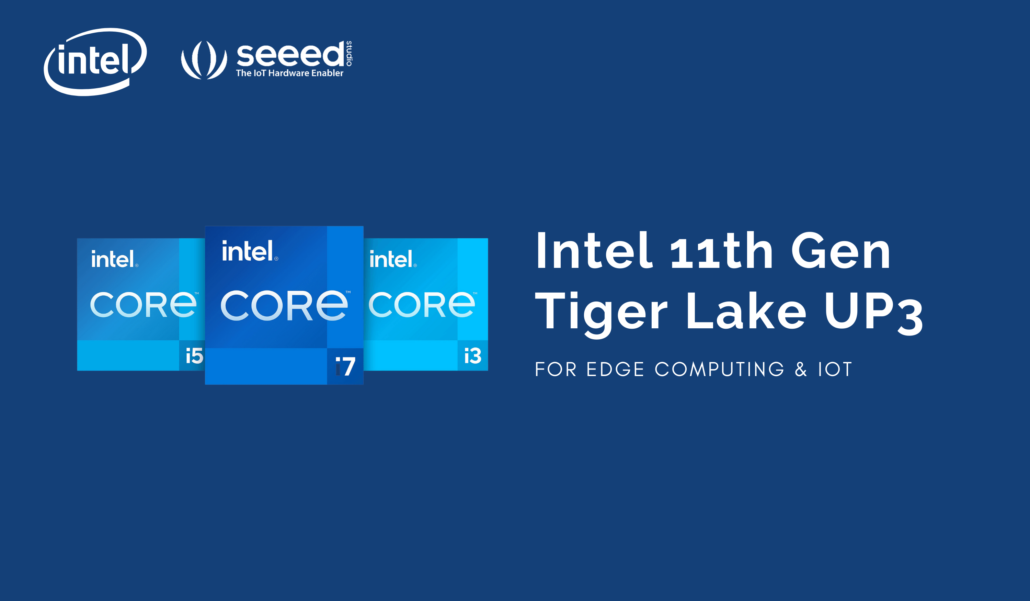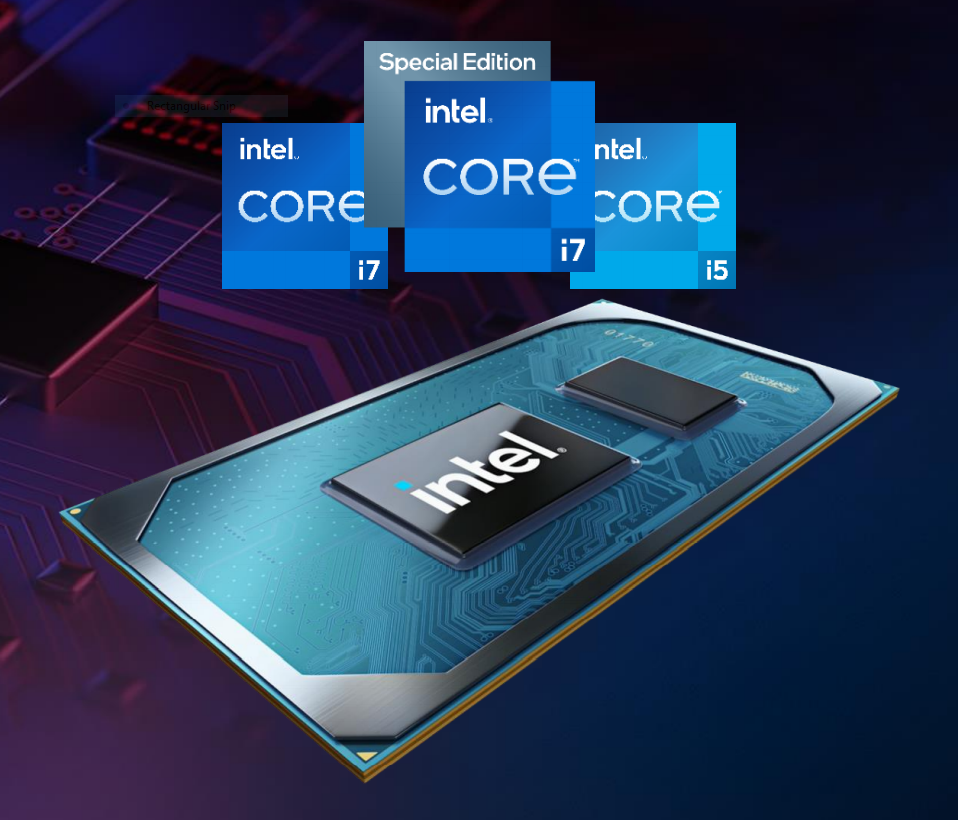What You Need to Know About 11th Gen Intel Core Processors – Tiger Lake UP3 for IoT
Intel’s 11th Gen processors, codenamed Tiger Lake, have just begun to hit the market for laptops and, most recently, desktops. A less discussed use case for Intel’s latest iteration to their industry leading x86 processors is, however, for none other than the Internet of Things. Computers in IoT operate on the edge to deliver distributed, low-latency computing in dynamic environments. With rising importance in edge computing and unique applications like edge AI, I’ll be sharing all you need to know about Intel’s 11th Gen Tiger Lake UP3 for IoT.

11th Gen Intel Core Tiger Lake UP3 – What’s New?
The upgraded Tiger Lake UP3 processors offered by Intel are manufactured on a third-generation 10nm process technology, which naturally brings a boost to both computing power and power efficiency. They offer up to 23% faster single thread performance, and up to 19% faster multi-thread performance, allowing users to build high-performance systems that require industrial-grade hardware – such as computer numerical control (CNC) machines, real-time control systems, human machine interfaces, medical diagnostics, AI and more!
In addition, the 11th Generation Intel Core processors debut the latest Intel Iris Xe Graphics platform, which offers up to 2.95 times faster graphics performance when compared to previous generations. The Tiger Lake UP3 processors have also been equipped with the latest PCI Express 4.0 and Thunderbolt 4/ USB4, as well as upgraded wireless connectivity with WiFi 6.
Yet, improved raw performance and updated peripherals are merely the beginning of why you should consider these chips for IoT!

Advanced Graphics Performance for Multimedia
With enhanced graphics from the Iris Xe Graphics with up to 96 EUs, the Tiger Lake processors can power display outputs of up to 4x 4K60 HDR or 2x 8K60 SDR, with up to two VDBOXes that can decode over 40 incoming video streams at 1080p and 30 frames per second. This makes it excellent for edge IoT applications like network video recorders for surveillance in security systems, digital signage and smart retail interfaces, as well as video-based machine vision tasks for inspection and quality control.
Specialised Hardware for Accelerated Edge AI Inferencing
State-of-the art machine learning requires competent hardware – especially for real time applications. Fortunately, Intel Deep Learning Boost (Intel DL Boost) offered on Intel 11th Gen Tiger Lake UP3 provides dedicated hardware for accelerating AI and inference on CPU vector neural network instructions (VNNI), or with INT8 (8-bit Integer) instructions on the GPU.
Not only that, you can also take advantage of the OpenVINO toolkit, an open framework for optimising the execution of machine learning runtimes, including convolutional neural networks, recurrent and attention-based networks. Through optimised calls for machine learning functions and convenient debugging and diagnostics, OpenVINO makes it incredibly easy to deploy effective machine learning applications like computer vision, speech recognition, natural language processing and recommendation systems on Tiger Lake UP3!
Learn more about OpenVINO for Intel 11th Gen Tiger Lake Processors by clicking here.
Enterprise-Grade Remote Management
The 11th Gen Intel Core Processors also join Intel’s line of Intel vPro platforms, which grants access to integrated and ready-to-deploy business-class computing. The Intel vPro platform offers additional benefits such as security, manageability and stability which are all critical benefits to computers operating on the edge in IoT. In particular, remote management features offered by Intel vPro allows you to maintain, upgrade, and even recover compromised devices on the field! This is definitely a massive game changer for the nature of distributed computing in IoT systems – since in-person management can be extremely inconveniently, costly, or impossible altogether!
I’ve discussed the Intel vPro platform in relation to edge computing and IoT in a previous article. For the full details of the benefits offered by the Intel vPro platform and Tiger Lake UP3, be sure to check it out here!
Real Time Computing for Time Sensitive Applications
Computers in IoT applications operate in dynamic environments, and are often required to produce real time insights by combining data from multiple sources or to transmit outputs in a defined period of time. For such insights to be accurate and valid, strict timing requirements must be met by both network communications and between different components within a given device itself. On the other hand, industrial control systems require strict timing in data transmission to behave in a predictable and thus useful manner.
You can opt for real-time optimised SKUs of the 11th Gen Intel Core Processors: i7-1185GRE, i5-1145GRE, i3-1115GRE – which come with Intel Time Coordinated Computing. Intel TCC technology offers hardware-based features to ensure time synchronisation and timely data packet delivery across device components. By further pairing your hardware with Time-Sensitive Networking (TSN) standards, you can also cover your bases with ultra-reliable, low-latency networking!
Read more about TSN and what it means for edge computing and IoT here.
Make the Most of Tiger Lake UP3 with reServer
The reServer is a compact and powerful server that can be used in both edge and cloud computing scenarios, designed around the 11th Gen Intel Core Tiger Lake UP3 processors. There are multiple options for the reServer, from the base i3 SKU to the i7 GRE version for specialised real time computing. All the benefits and features discussed in this article – Intel Iris Xe Graphics, Intel DL Boost, OpenVINO, Intel vPro, Intel TCC – you name it, reServer lets you access it all to build highly effective edge applications.
Not only that, reServer expands on the features of the Tiger Lake processors with diverse network connectivity capabilities, including two high-speed 2.5-Gigabit Ethernet ports and hybrid connectivity with 5G LoRaWAN, BLE and WiFi – as well as integrated cooling and dual SATA III connectors for internally mounting 3.5” SATA hard disk drives. It’s truly a complete solution for powerful edge computing!
Product Features
- CPU: Latest 11th Gen Intel® Core™ i3 CPU running up to 4.10GHz (Base)
- Graphics: Intel UHD Graphics Xe G4 48EUs running up to 1.25 GHz (Base)
- Rich Peripherals: Dual 2.5-Gigabit Ethernet, USB 3.0 Type-A, USB 2.0 Type-A, HDMI and DP output
- Hybrid connectivity including 5G, LoRa, BLE and WiFi (Additional Modules required for 5G and LoRa)
- Dual SATA III 6.0 Gbps data connectors for 3.5” SATA hard disk drives with sufficient internal enclosure storage space
- M.2 B-Key/ M-Key/ E-Key for expandability with SSDs or 4G and 5G modules
- Compact server design, with an overall dimension of 124mm*132mm*233mm
- Quiet cooling fan with a large VC heat sink for excellent heat dissipation
- Easy to install, upgrade and maintain with ease of access to the internal components
Learn more about reServer on the Seeed Online Store!
Ending Off & More Resources
Intel’s 11th Gen Tiger Lake processors have become highly popular for laptops and desktops, but they’ve also spared no effort in supporting Tiger Lake UP3 as an IoT platform through a suite of hardware and software features. For powerful edge computing hardware that’s both effective and easy to manage, Intel’s offering is definitely worth considering if you’re developing an IoT solution.
If you’re keen to learn more about the resources accompanying Intel’s Tiger Lake UP3 or edge computing in general, try the following!
- Tiger Lake UP3 Processors – Intel
- OpenVINO for Intel 11th Gen Tiger Lake Processors
- A Look at the Intel vPro Platform for Edge Computing
- Intro to Time-Sensitive Networking for M2M Communication in IoT
- What is an Edge Server? – Edge Computing Embedded Systems